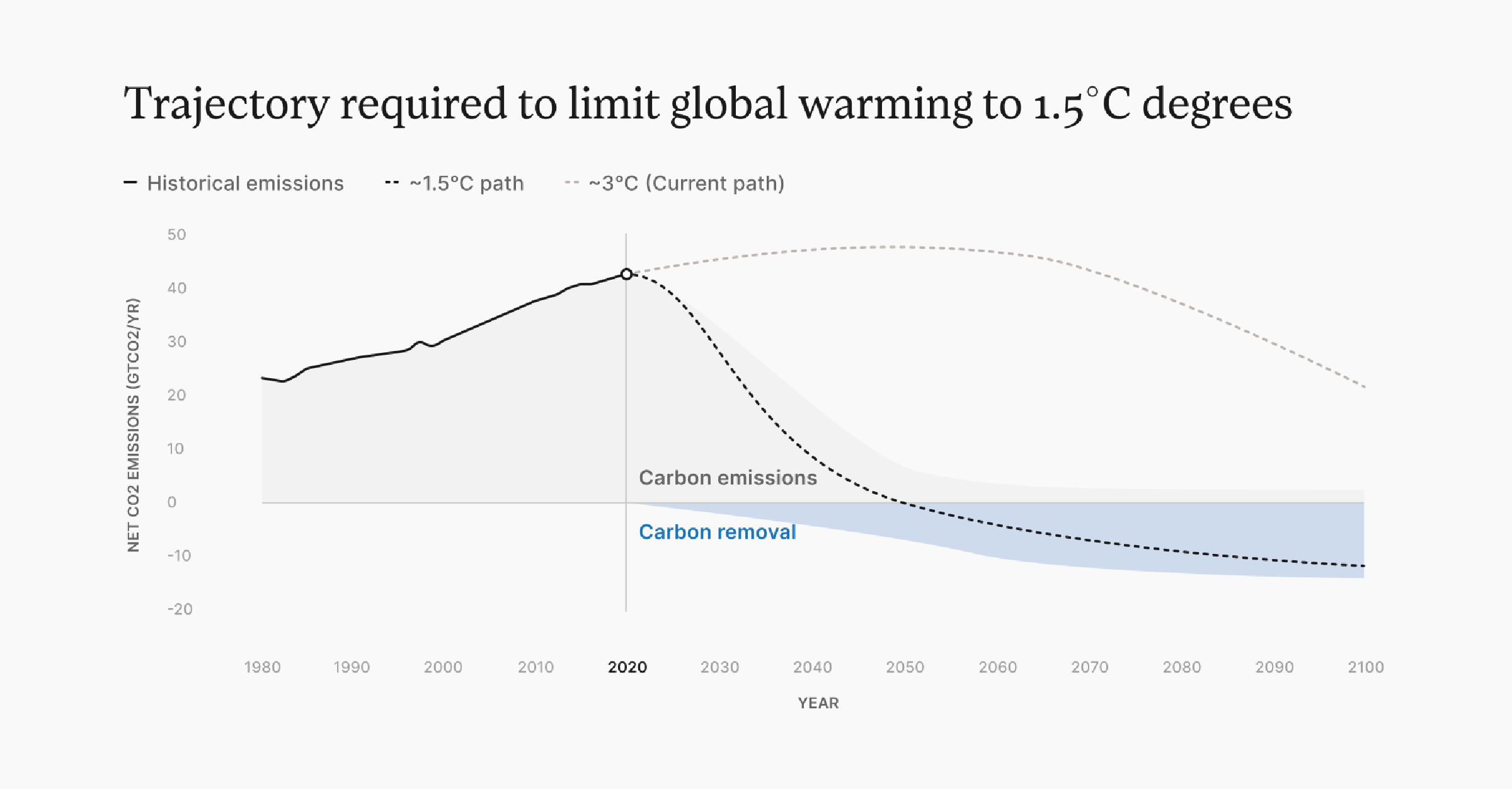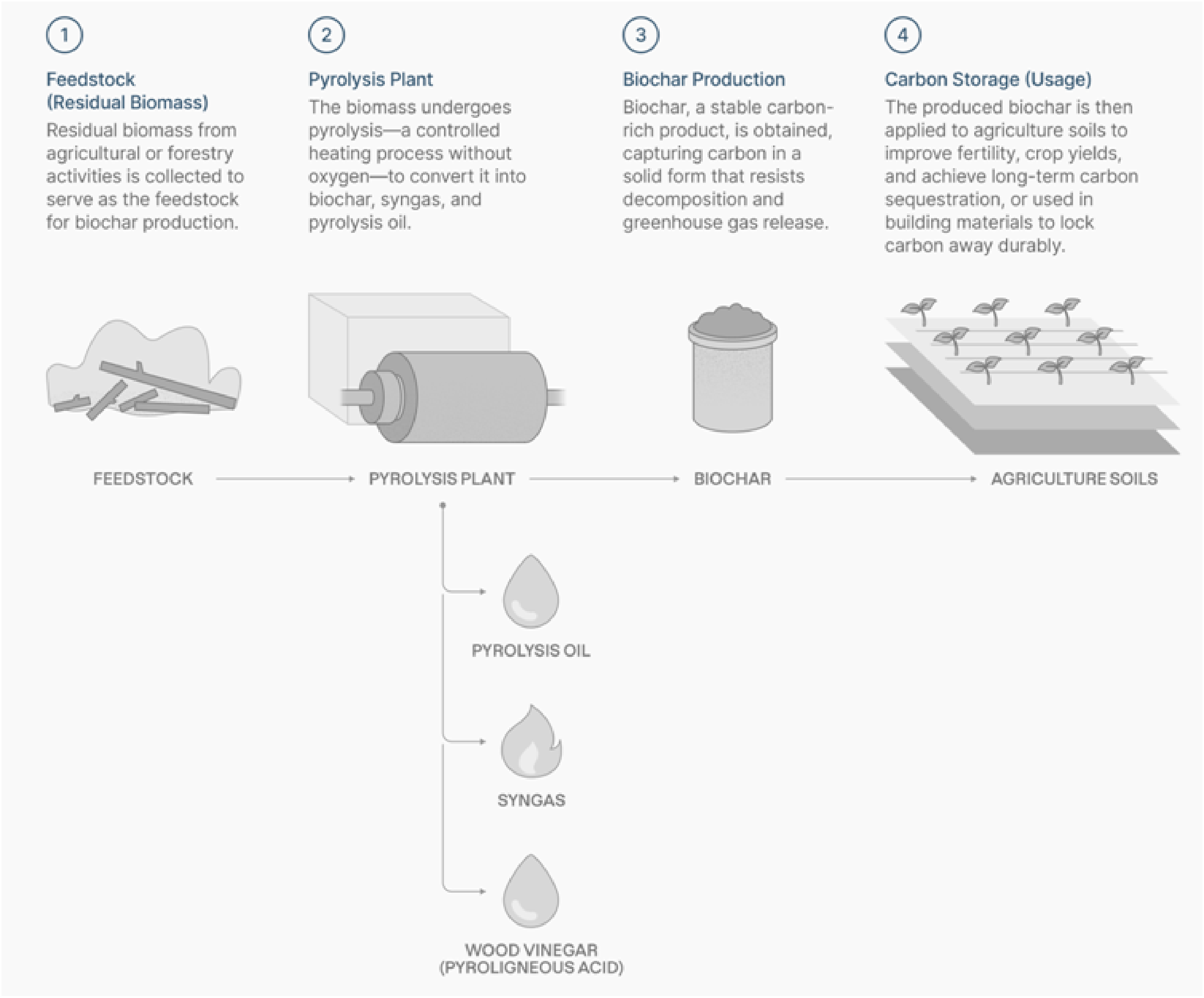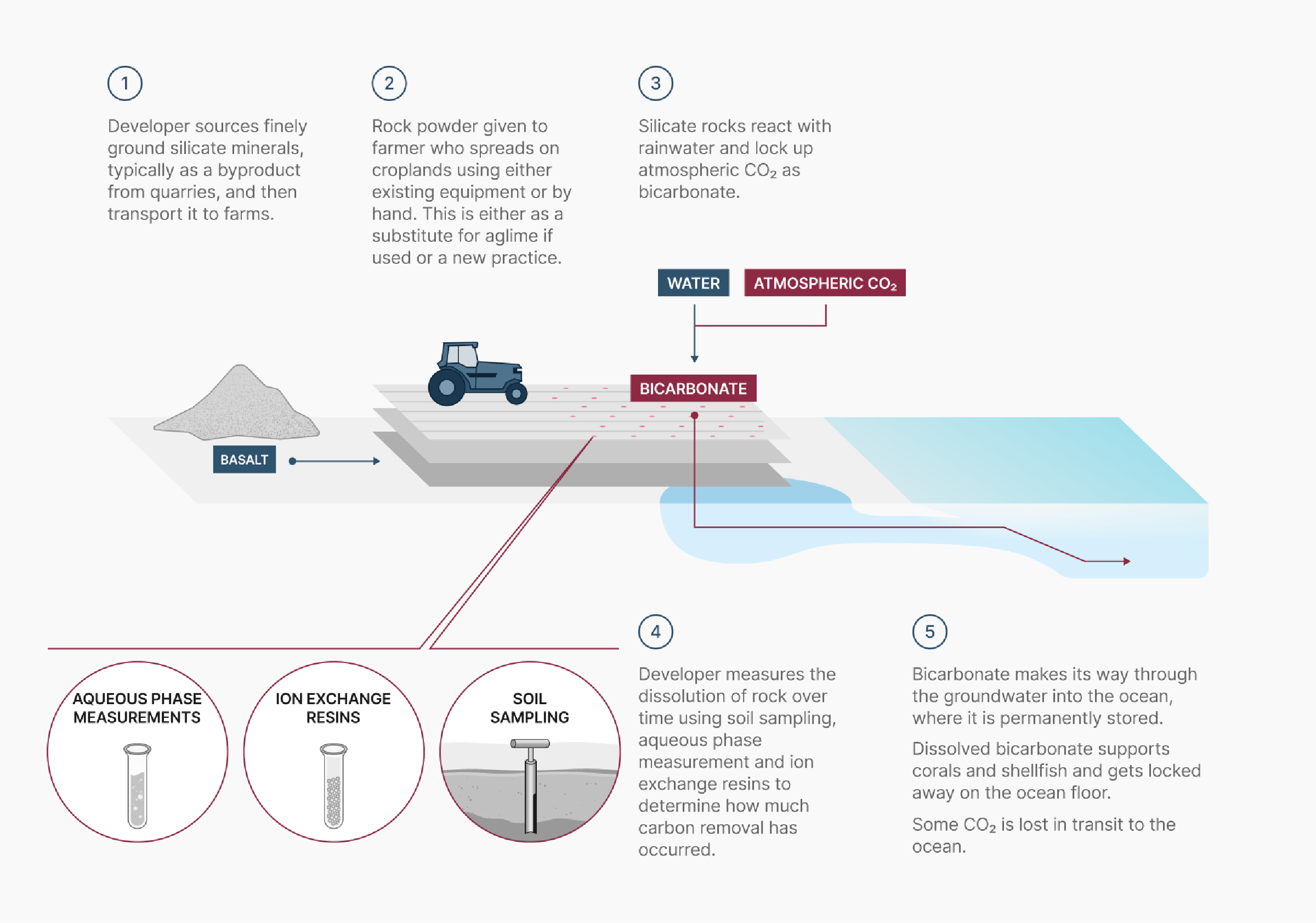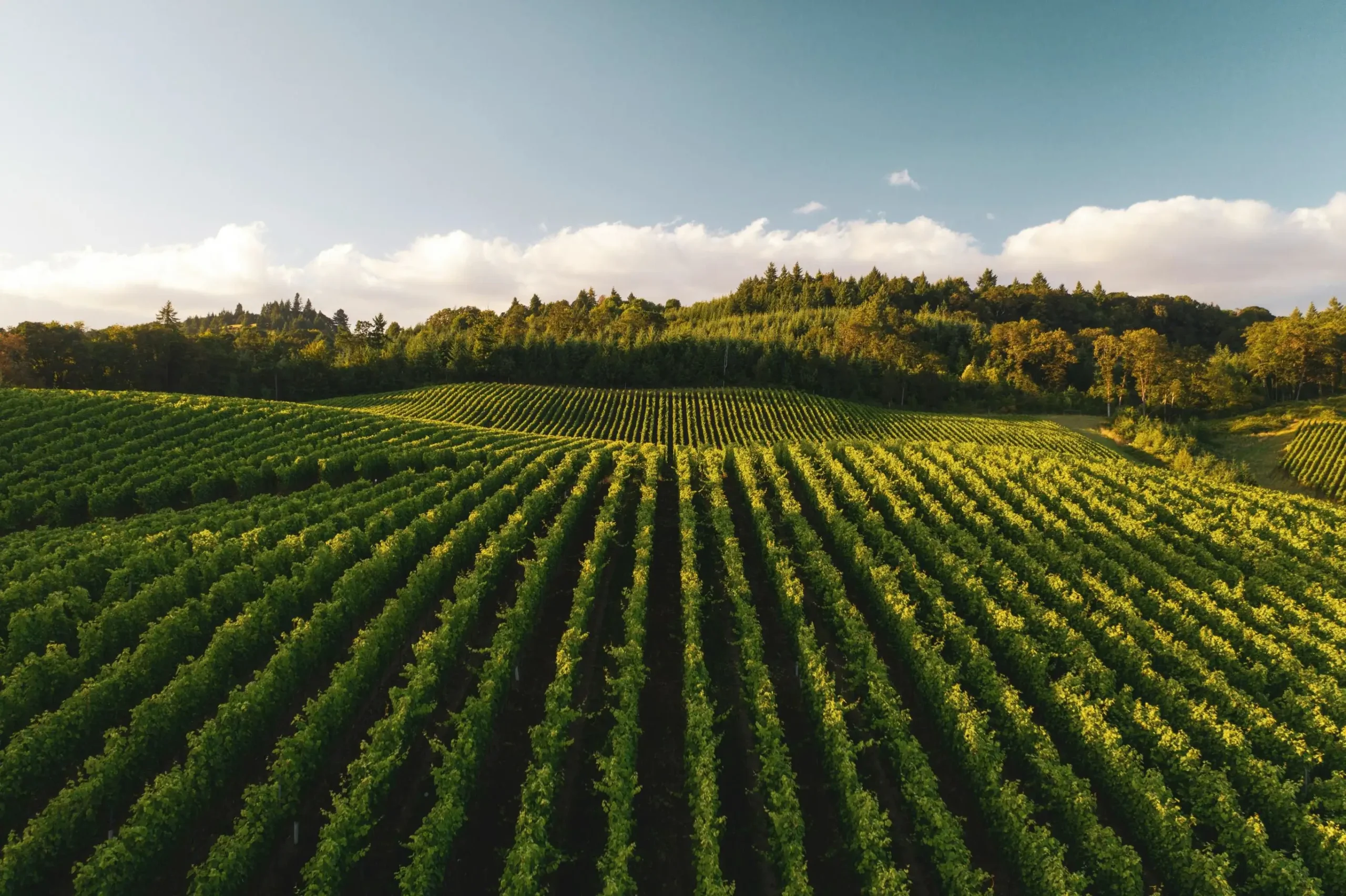
Unlocking the Future of Climate Smart Agriculture in the Global South
The latest research and findings on integrating Biochar Carbon Removal and Enhanced Rock Weathering into Global South Agricultural Value Chains
Climatic Solutions from the Soil Up
Removing, reducing and avoiding agricultural emissions.
Agriculture is uniquely positioned at the crossroads of climate action, socio-economic development, and global finance. It accounts for approximately 22% of global greenhouse gas emissions yet also offers significant potential for carbon mitigation. Economically, the sector is critical to livelihoods, employing around 65% of the labour force in developing countries, sustaining over one billion people globally, and underpinning food security.

Climate
Agriculture significantly contributes to global greenhouse gas emissions, yet fully eliminating these emissions is inherently challenging. Biochar Carbon Removal (BCR) and Enhanced Rock Weathering (ERW) deliver durable carbon sequestration, locking away atmospheric CO₂ for centuries or millennia, and emissions reductions for both offsetting and insetting agricultural emissions to achieve credible and long-lasting climate action within supply chains.
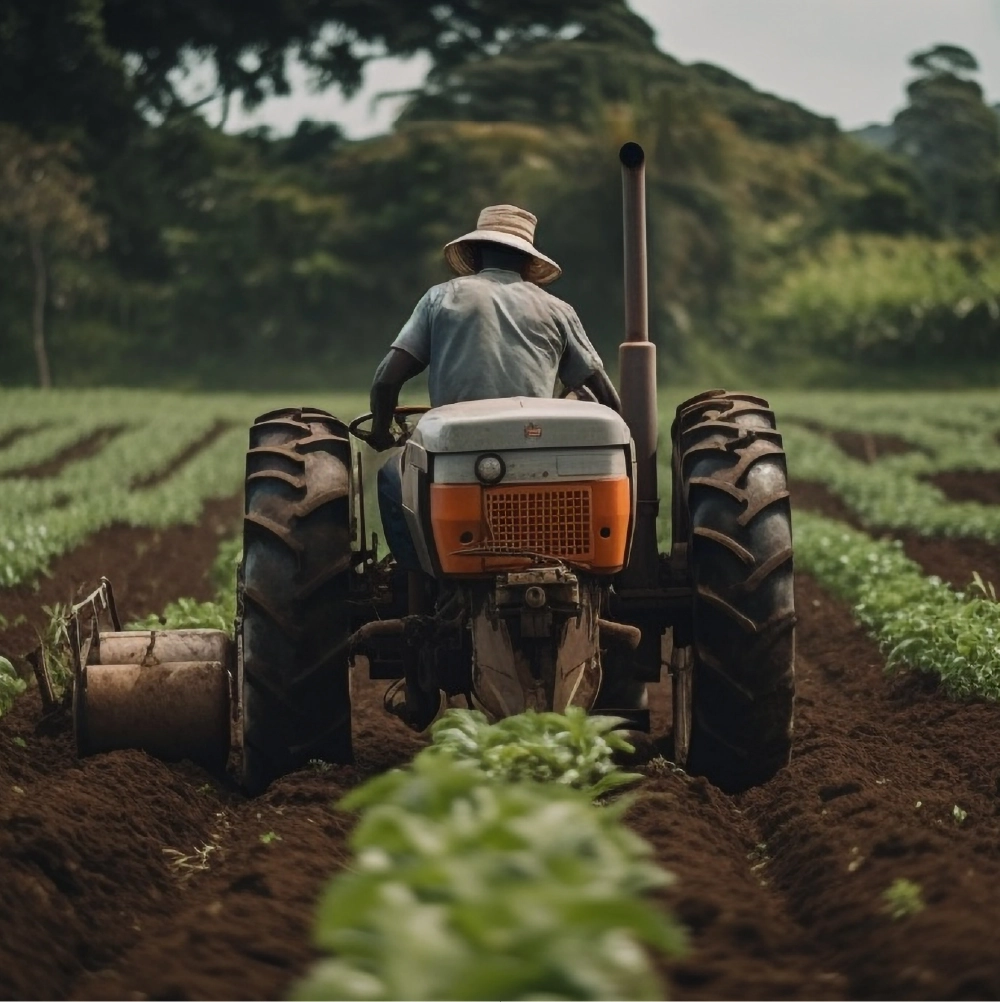
Agronomic Improvement & Soil Degradation
Across the Global South, soil degradation impacts approximately 65% of croplands, drastically reducing crop yields and limiting resilience to drought and climate extremes. Biochar Carbon Removal has the potential to revitalise degraded soils by enhancing their structure, fertility, and microbial activity, while Enhanced Rock Weathering can restore nutrient balance and stabilise soil pH—collectively helping to reverse degradation and bolster productivity.

Socio-economic Benefits
Smallholder farmers frequently experience severe financial vulnerability due to volatile fertiliser costs and declining soil productivity, threatening livelihoods and rural economies. BCR and ERW improve farm-level economics by reducing reliance on external inputs, creating new rural employment opportunities, and providing additional revenue streams through carbon markets, significantly enhancing financial stability and resilience.

Environmental Protection & Resource Management
Open-field burning of agricultural residues causes severe air pollution and respiratory issues, while excessive fertiliser application leads to nitrate and phosphate runoff, harming aquatic ecosystems. Biochar Carbon Removal provides a sustainable alternative by converting crop residues into biochar through controlled pyrolysis, significantly reducing air pollution from open-field burning. Additionally, biochar enhances nutrient retention in soils, decreasing nitrate and phosphate leaching and protecting freshwater resources.
Reaching net-zero emissions in agriculture requires not just reductions but also durable carbon removal solutions that reliably store carbon for extensive time periods.
The Intergovernmental Panel on Climate Change (IPCC) identifies Carbon Dioxide Removal (CDR)—”anthropogenic activities removing CO₂ from the atmosphere and durably storing it in geological, terrestrial, ocean reservoirs, or in products”—as essential to offsetting unavoidable emissions.
Biochar Carbon Removal (BCR) and Enhanced Rock Weathering (ERW) are two leading durable CDR technologies with significant integration potential in agricultural supply chains:
Biochar Carbon Removal (BCR)
Involves thermochemically converting biomass or organic waste, such as agricultural residues, into a stable, carbon-rich material known as biochar through pyrolysis. Biochar is highly resistant to decomposition, effectively storing carbon for centuries or millennia while simultaneously enhancing soil health, fertility, and productivity. It supports nutrient retention, water conservation, microbial activity, and overall resilience of degraded soils, making it a valuable tool for sustainable agriculture.
Enhanced Rock Weathering (ERW)
Accelerates the natural breakdown of finely crushed silicate rocks (e.g., basalt), allowing atmospheric CO₂ to be permanently captured in stable carbonate minerals. ERW offers exceptional carbon sequestration permanence (thousands to millions of years) and additional agronomic benefits, such as improved soil fertility and nutrient availability. It can be readily integrated into conventional agricultural practices, facilitating widespread adoption.
Benefits of Integrating BCR and ERW into Agricultural Value Chains :
Agronomic Solution for the Global South
- If used appropriately can effectively reverse the trend of soil degradation.
- Significantly enhances agricultural resilience to climate change.
- Optimally suited for deployment across Global South regions.
A Socio-Economic Solution
- Reduces crop burning, improving air quality and public health.
- Enhances financial resilience for smallholder farmers.
- Generates employment opportunities in rural areas.
A Waste-to-Value Solution for the Environment
- Converts agricultural waste into productive resources.
- Reduces nitrate and phosphate leaching, protecting waterways.
- Supports biodiversity within agricultural landscapes.
Robust Commercial Case
- Demonstrates comparatively low and declining costs.
- Strong internal rate of return (IRR) from integrated investments.
- Costs are offset by multiple co-benefits distributed across value chains.
Scalable Full Decarbonisation Solution
- Enables emissions reduction, avoidance, and durable carbon removal.
- Complements rather than competes with existing land uses.
- Offers permanence and soil organic carbon (SOC) protection, significantly reducing reversal risks.
